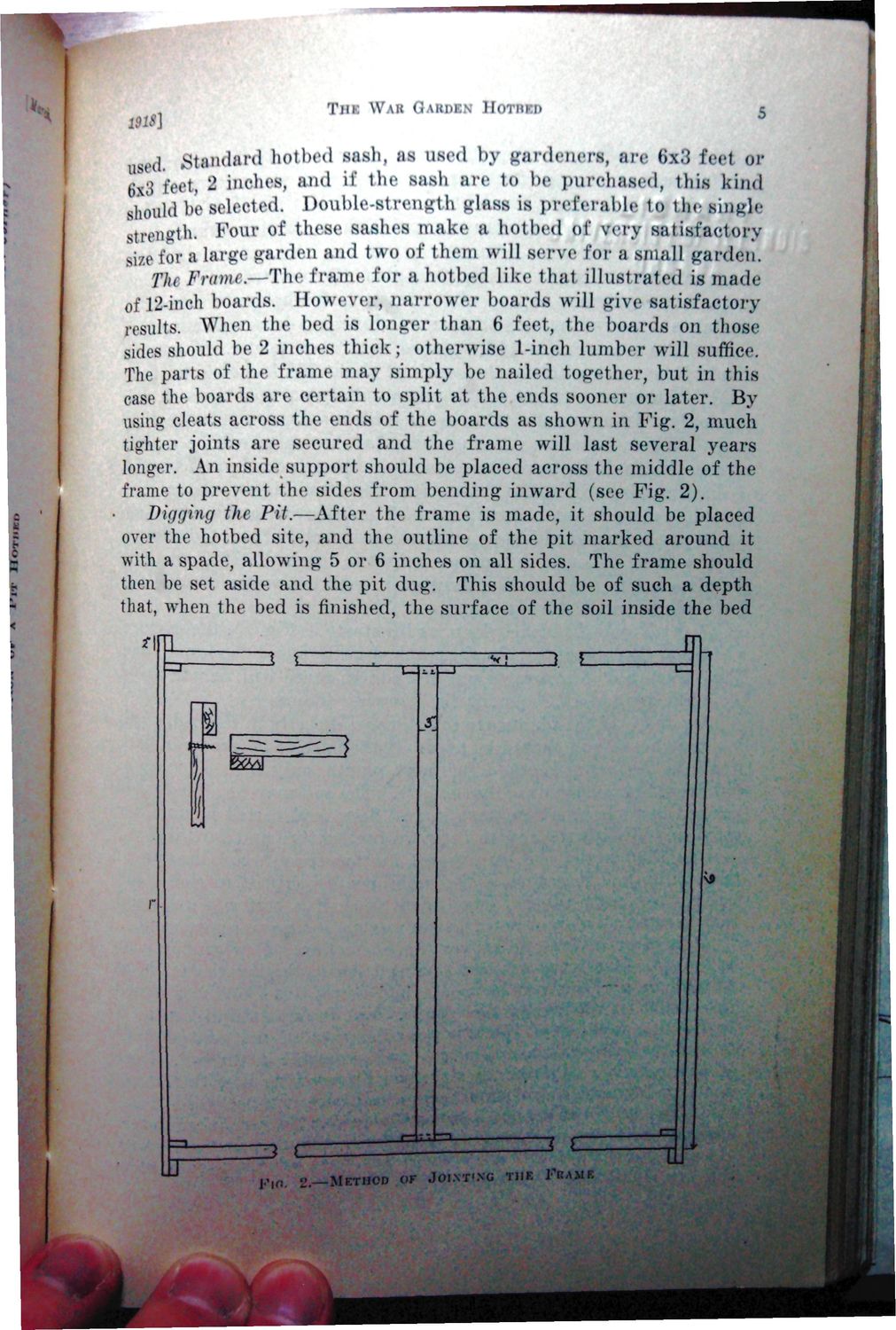| |
| |
Caption: War Publications - WWI Compilation 1923 - Article 45
This is a reduced-resolution page image for fast online browsing.

EXTRACTED TEXT FROM PAGE:
* * ^ 1918} T H I WAR GARDIN HOTBED 5 I standard hot bod sash, as used by gardeners, are 6x3 feel or 6x3 feet, 2 inches, and if the sash are to be purchased, thil kind should be selected. Double-strength glass il preferable to the single? strength, Four of these sashes make a hotbed of very satisfactory un Tin of 12-inch boards. However, narrower boards will give satisfactory results. When the bed is longer than 6 feet, the boards on those sides should be 2 inches thick; otherwise 1-inch lumber will suffice. The parts of the frame may simply be nailed together, but in this case the boards are certain to split at the ends sooner or later. By using cleats across the ends of the boards as shown in Fig. 2, much tighter joints are secured and the frame will last several years longer. An inside support should be placed across the middle of the frame to prevent the sides from bending inward (see Fig. 2). Digging the Pit.—After the frame is made, it should be placed over the hotbed site, and the outline of the pit marked around it with a spade, allowing 5 or 6 inches on all sides. The frame should then be set aside and the pit dug. This should be of such a depth that, when the bed is finished, the surface of the soil inside the bed ^irn i *1 :t } f 1 J F t a 2.—MrrifOD OF JOINT-NG THE FBA*
| |